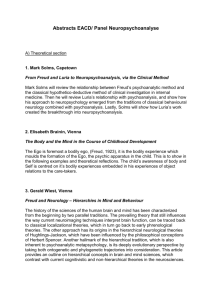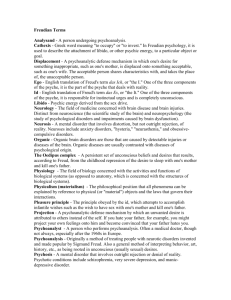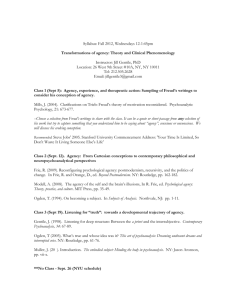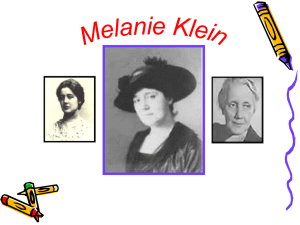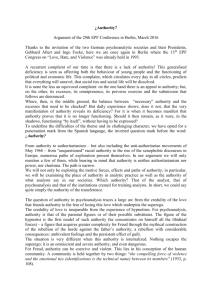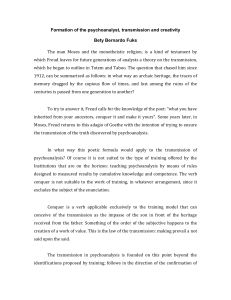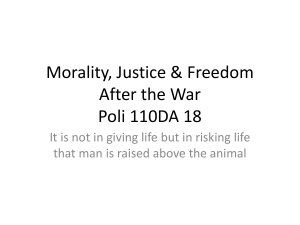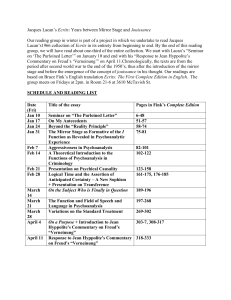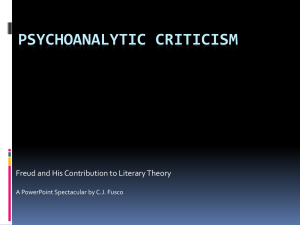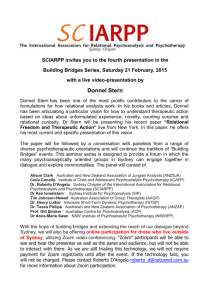Psychoanalytic Theory
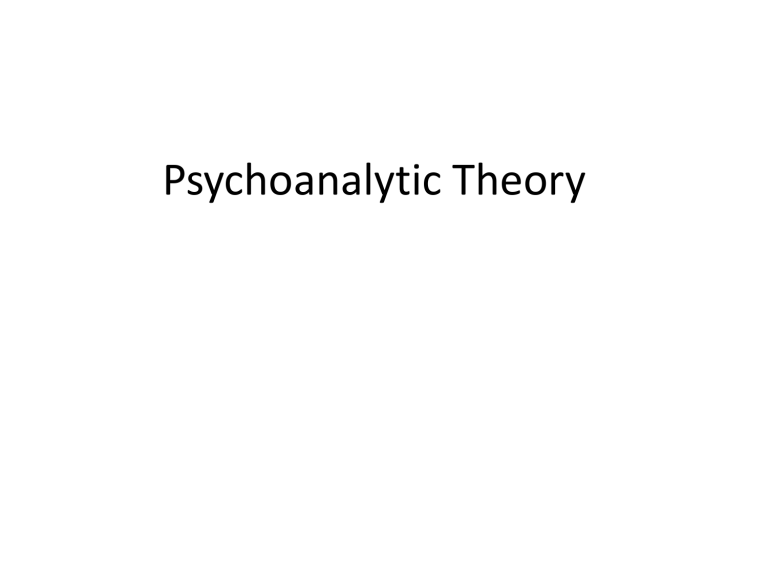
Psychoanalytic Theory
Psychoanalytic Theory
• One of the prominent theories in Psychoanalysis.
• A radical new perspective in psychology.
• It is mostly credited to the works of Sigmund
Freud and his theory of personality and psychoanalysis.
• It was very appealing to not only those in the psychology field, but also in literature as well.
• Psychoanalytic concepts and themes from the
Freud’s Psychoanalytic theory have been found in many literary pieces and used in literary writing techniques.
Psychoanalysis
• While most psychologists at the time looked for a physiological and biological explanation for behavior psychoanalysis instead focused on:
• Significance of the unconcious
• Instinctual drives
• Hypnosis
• Significance of dreams
• Free Association
Psychoanalysis
• Psychoanalysis’ goal was to show that behavior was caused by the interaction between the unconcious and consciousness.
Psychoanalysts believe that there is always a strive of thoughts in the unconcious to become conscious; and the fulfillment of desires which are unacceptable in societywhich according to Freud are mostly erotic and sexual.
Psychoanalysis puts much importance on the significance between the unconcious and thought processes. They believed that an awareness of this is therapeutic and vital to a health y mind.
Freud’s Psychoanalytic Theory
• Freud’s Psychoanalytic Theory encompasses many of the themes in psychoanalysis about the unconcious and uses it to explain personality.
• It is in Freud’s Psychoanalytic
Theory of Personality which first introduces his concepts of the id, ego and superego.
• Freud’s interpretation of behavior almost always suggested d a sexual instinctual drive and cause.
• His psychosexual theory of development, he states explains many behaviors from childhood to adulthood.
Terms in Psychoanalysis
• Unconcious mindrepressed thoughts & desires.
• Id- desires
• ego- balances the id and superego
• Superego- morals, societies expectations.
• Sublimation- defense mechanism when socially unacceptable desires are transformed for satisfaction into socially acceptable behaviors.
Psychoanalysis
• Psychoanalysis suggest that abnormal behavior and therapy is when unconscious thoughts and desires are released, and finally in awareness in the consciousness. Psychoanalysts use introspection, free association as a means of therapy.
• Introspection is when one observes ones own thoughts and feelings- and tries to become aware of the thought processes in ones mind; when one self reflects and tries to report these thoughts, emotions and desires.
Free Association
• Free association, iconic by the famous
Freudian couch- is a technique, started by Sigmund Freud.
• This therapeutic technique required the patient to speak freely while the psychologist merely listened and interpreted.
Free Association and Stream of
Consciousness
• Free association is known to have inspired the literary technique Stream of Consciousness.
• Stream of consciousness is a narrative mode which gives a detailed account and perspective of a character’s thoughts processes and feelings.
The use of this technique is found in many modern writers’ works, like Virginia Woolf.
• Stream of Consciousness and Free Association both show the importance of perspective and the awareness of thought processes and emotions.
Citations
• http://go.galegroup.com.queens.ezproxy.cuny.edu:2048/ps/retrieve.do?sgHitCoun
tType=None&sort=RELEVANCE&inPS=true&prodId=GVRL&userGroupName=cuny_ queens&tabID=T003&searchId=R5&resultListType=RESULT_LIST&contentSegment
=&searchType=BasicSearchForm¤tPosition=3&contentSet=GALE|CX304530
2103&&docId=GALE|CX3045302103&docType=GALE&role=
• http://homepage.newschool.edu/~quigleyt/vcs/psychoanalysis-intro.pdf
• http://www.era.lib.ed.ac.uk/bitstream/1842/1894/1/lbondi006.pdf
• http://www.cla.purdue.edu/academic/engl/theory/psychoanalysis/psychterms.ht
ml
• http://go.galegroup.com.queens.ezproxy.cuny.edu:2048/ps/retrieve.do?sgHitCoun
tType=None&sort=RELEVANCE&inPS=true&prodId=GVRL&userGroupName=cuny_ queens&tabID=T003&searchId=R1&resultListType=RESULT_LIST&contentSegment
=&searchType=BasicSearchForm¤tPosition=5&contentSet=GALE|CX345250
0306&&docId=GALE|CX3452500306&docType=GALE&role=
